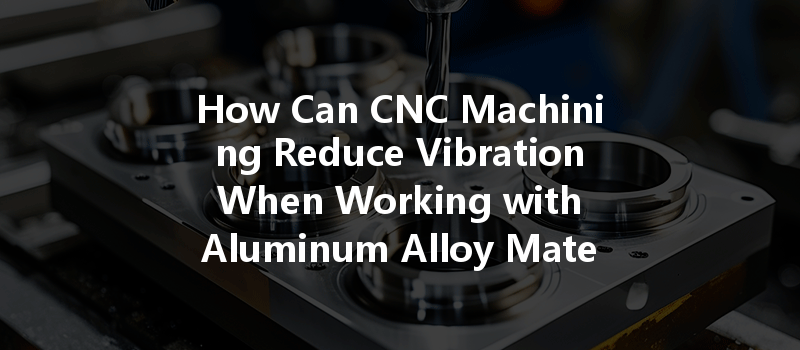Did you know that excessive vibration during CNC machining can lead to a staggering loss in productivity and part quality, potentially costing manufacturers up to $200,000 annually due to rework and machine downtime? Vibration is more than just a minor inconvenience; it can severely affect the precision of the final product, leading to defects and misalignments. This blog explores practical methods to mitigate vibration during CNC machining, particularly when working with aluminum alloy materials.
As industries seek to improve efficiency and accuracy, the need to address vibration in machining processes becomes increasingly crucial. In the next sections, we’ll delve into the causes of vibration, its implications in machining processes, and comprehensive solutions that can be implemented in workshop settings.
—
Understanding CNC Machining and Aluminum Alloys
CNC (Computer Numerical Control) machining is a sophisticated manufacturing process that utilizes computer systems to control machine tools. This technology allows for high precision and efficiency in producing components from various materials, including aluminum alloys.
Aluminum alloys have become the go-to material in numerous industries such as automotive, aerospace, and electronics due to their lightweight and strength properties. However, machining aluminum alloys poses unique challenges, including susceptibility to vibration, which must be effectively managed to achieve optimal results.
—
What Causes Vibration in CNC Machining?
To devise effective solutions, it is essential to understand what causes vibration during the CNC machining process. Some of the primary causes include:
—
The Impact of Vibration in CNC Machining
Vibration during CNC machining adversely affects the quality and accuracy of the finished product. Here are some common challenges associated with vibration:
—
Solutions to Reduce Vibration in CNC Machining of Aluminum Alloys
Now that we understand the causes and effects of vibration in CNC machining, let’s explore in detail the various strategies we can employ to mitigate this issue effectively.

Choose the Right Tool Material and Geometry: Selecting tools made from high-quality materials (e.g., carbide, cermet) that are designed specifically for aluminum machining can significantly reduce vibration. Additionally, tools with positive rake angles help minimize cutting forces.
Fine-Tune Spindle Speed and Feed Rate: Lowering the spindle speed while increasing the feed rate may help reduce chatter in some situations. Finding the right balance that works for the specific aluminum alloys being machined can lower the chances of vibration.
Set Optimal Depth of Cut: Shallow cuts can minimize the forces exerted by the tool on the workpiece, reducing the likelihood of vibration. However, consider the balance between processing time and machine load.
Conduct Regular Maintenance: Ensuring machines are well-maintained can help reduce vibration. Regularly inspect the machine’s components, such as bearings and guides, and replace any worn parts.
Use Damping Fixtures: Employ damping technologies, such as vibration isolation pads or viscoelastic materials to absorb vibrations. Utilizing a properly designed fixture can stabilize the workpiece and dampen vibrations intrinsically.
Utilize Simulation Software: CNC programming software capabilities allow for simulation of tool paths. Optimizing the tool path reduces abrupt changes in direction and speed, minimizing the impact of vibration.
Smoothing Tool Paths: Creating gradual transitions in the machining process reduces shock-loading on the machine and workpiece, helping to mitigate vibration effects.
Ensure Proper Tool Balancing: Unbalanced tool holders can lead to excessive vibration. Ensure that all tooling is balanced and within specified tolerances.
Use High-Quality Fixtures: Strongly mounting the workpiece using well-designed fixtures will minimize movement during operation. This can significantly stabilize machining processes, reducing vibrations.
Consider Adaptive Control Systems: Implementing adaptive control strategies allows the machine to adjust its cutting parameters in real-time based on the vibration feedback received, reducing chatter.
Use Ultrasonic Machining: For specific applications, ultrasonic machining can provide a means to minimize vibration while enhancing precision. Its high-frequency vibrations offer opportunities to machine delicate aluminum components without significant distortion.
—
In conclusion, managing vibration during CNC machining of aluminum alloy materials is essential for ensuring high-quality output and maintaining overall efficiency in manufacturing processes. By understanding the multi-faceted causes of vibration and employing comprehensive solutions such as optimal tool selection, cutting parameter adjustments, improving machine stability, tool path optimization, and leveraging advanced machining techniques, manufacturers can significantly reduce vibration impacts on their operations.
As industries evolve with increased demands for precision and quality, addressing machining vibration must be a foundational aspect of any comprehensive manufacturing strategy. Remember that investing in vibration reduction isn’t just about improving product quality—it’s also about safeguarding operator health, enhancing equipment lifespan, and improving your bottom line.
It is essential for manufacturers and operators alike to continually educate themselves on vibration reduction strategies and adopt best practices to stay competitive in a rapidly changing market. The time to start implementing these techniques is now; the benefits are substantial, and the potential risks of ignoring vibration management are costly. With diligent attention to the outlined strategies, your CNC machining operations will be poised for success.
—
Thank you for reading, and remember, addressing vibration is not just a technical consideration; it’s a strategic advantage in the highly competitive world of CNC machining!






